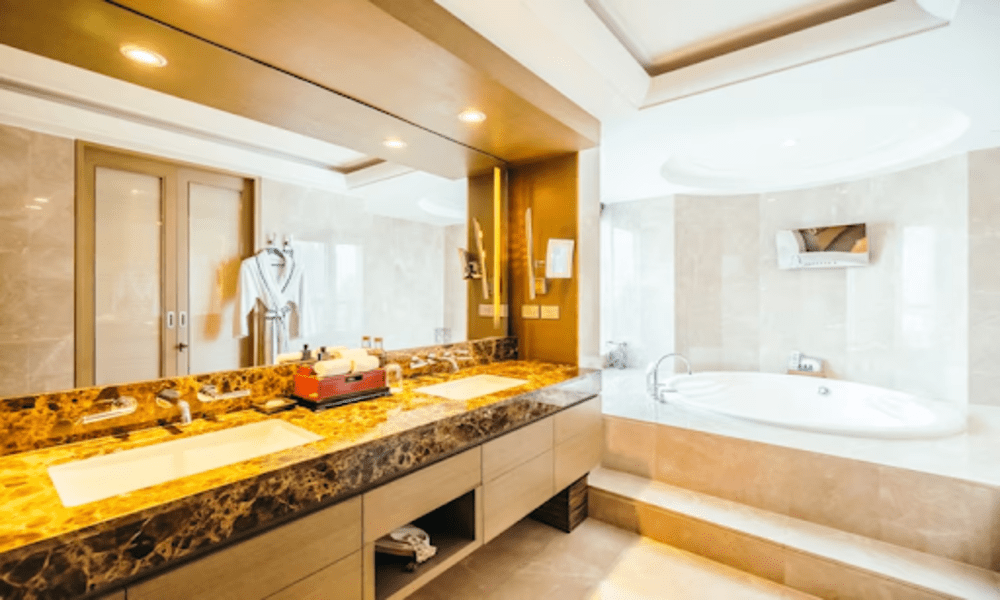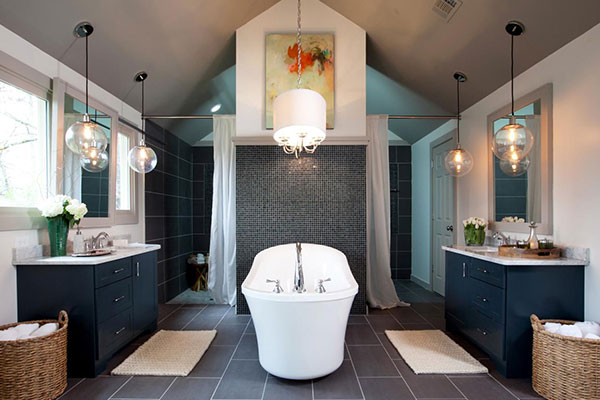Lighting is a key component of bathroom design, helping to create a space that is both visually beautiful and useful. Several forms of lighting should be used in a well-lit bathroom to improve both design and utility. By skillfully combining ambient, task, and accent lighting, layering lighting enables you to create the perfect ambiance for this important area. This post provides instructions on how to integrate these various lighting styles to create a bathroom that suits all of your requirements.
Comprehending Ambient Lighting
The first layer of illumination in every bathroom is ambient lighting. It eliminates shadows and provides a reasonable amount of brightness by encompassing the general light that permeates the space. Overhead chandeliers, recessed modern bathroom light fixtures are common sources of ambient lighting. In order to create a welcoming ambiance in your bathroom, use energy-efficient LED ambient lights that provide a gentle, pleasant glow. In order to ensure functioning without overpowering glare, the goal is to provide a balanced and consistent light level across the room.
Why Task Lighting Is So Important
Task lighting is necessary for some tasks like shaving, cosmetics application, and tooth brushing, while ambient lighting creates the ambiance. To provide good sight at crucial locations, particularly near mirrors and sinks, task lighting should be bright and concentrated. Even, shadow-free lighting that is perfect for personal grooming may be achieved with wall-mounted sconces above or on either side of the mirror. Additionally, to improve visibility for chores and make sure that shadows don’t disrupt your routine, think about installing under-cabinet lighting in vanities. Depending on your demands, you may also choose fixtures that are adjustable.
Accent Lighting for Enhancement
Accent lighting gives a bathroom flare by emphasizing architectural details or décor and improving the space’s aesthetic appeal. In addition to being useful, this layer of illumination also serves to create ambience. LED strips under freestanding tubs or behind mirrors may provide a soft light that gives the room depth. Recessed lighting may also be utilized to draw attention to ornamental tiles or artwork, making them stands out. You may adjust the accent lighting’s intensity using dimmable choices, giving it flexibility for various settings and events.
Striking the Correct Balance
The ambient, task, and accent lighting layers must all be balanced for a bathroom to have effective lighting. Although functional areas need high work lighting, the softer ambient light should not be overpowered. In a similar vein, accent lighting may improve the appearance without interfering with the important activities. Finding the ideal harmony may be aided by trying out different fixtures and locations. To combine usefulness and design, think about using a mix of dimmable switches or smart lighting controls that let you change the brightness levels throughout the day.

 How Realtors Can Sell Homes Faster with Staging
How Realtors Can Sell Homes Faster with Staging  How Often Should a Roof Be Replaced?
How Often Should a Roof Be Replaced?  What to Do During a Pest Control Treatment: Safety Protocols
What to Do During a Pest Control Treatment: Safety Protocols  Segmental Block vs. Poured Concrete Retaining Walls: A Comparison
Segmental Block vs. Poured Concrete Retaining Walls: A Comparison  Narra Residences Unveil Supreme Elegance in Singapore’s Dairy Farm Walk
Narra Residences Unveil Supreme Elegance in Singapore’s Dairy Farm Walk  Emergency Roof Repair in Wyoming: What to Do When Disaster Strikes
Emergency Roof Repair in Wyoming: What to Do When Disaster Strikes  Red Flags to Watch Out for When Choosing a Real Estate Agent
Red Flags to Watch Out for When Choosing a Real Estate Agent  How Site Preparation Impacts the Success of Concrete Construction
How Site Preparation Impacts the Success of Concrete Construction  Florida’s Venomous Spiders: What to Know and When to Worry
Florida’s Venomous Spiders: What to Know and When to Worry 
